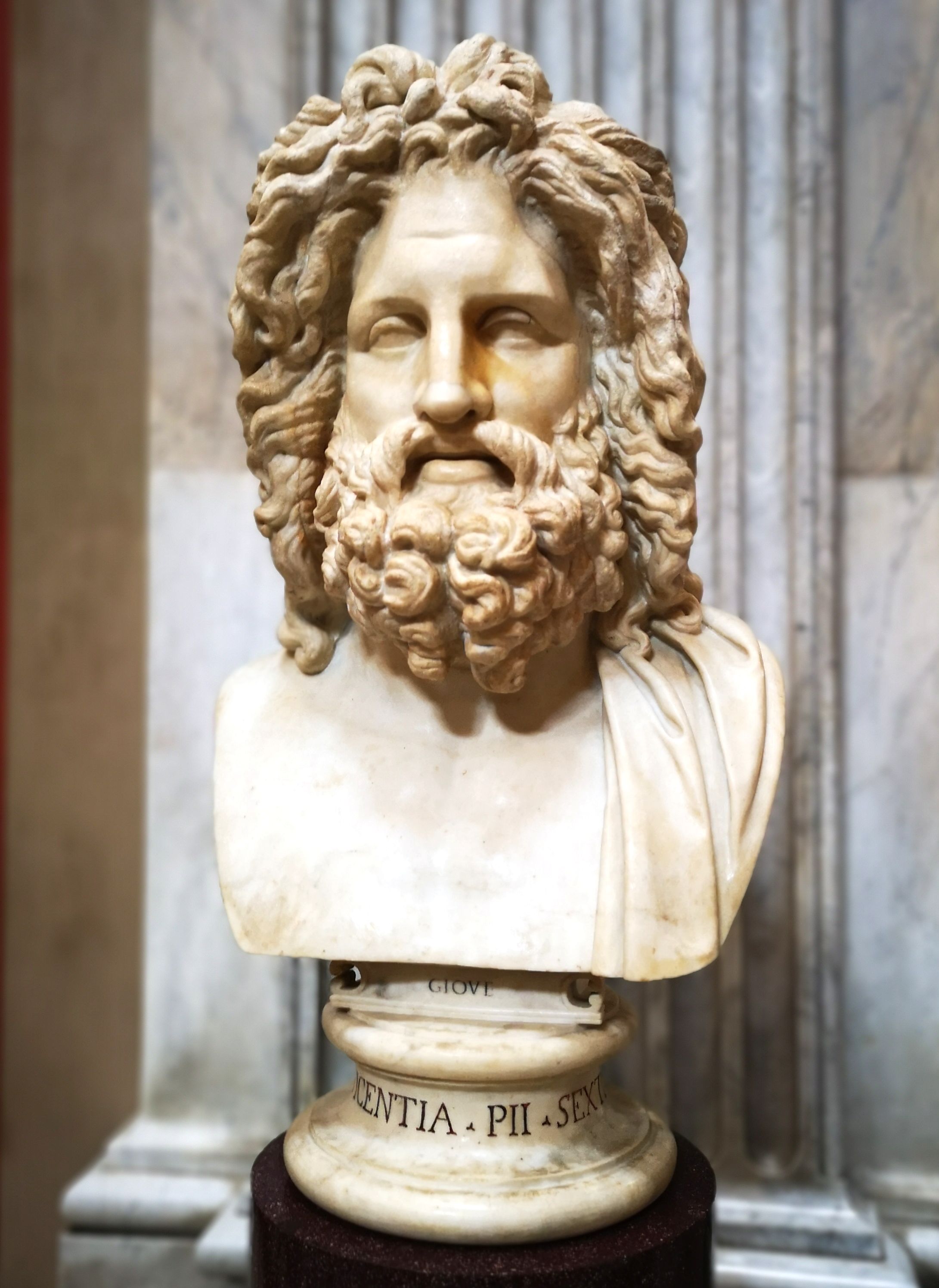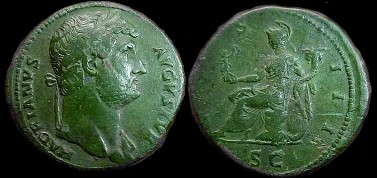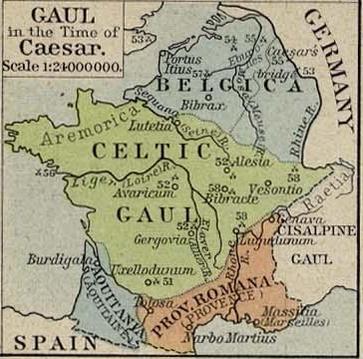|
Priscia Gens
The gens Priscia was an obscure plebeian family at ancient Rome. No members of this gens are mentioned in history, but several are known from inscriptions. A family of this name settled at Virunum in Noricum. Origin The nomen ''Priscius'' is derived from the common cognomen , old or elder. Praenomina The praenomina associated with the Priscii are ''Gaius'', ''Titus'', '' Publius'', and ''Quintus'', all of which were among the most common names throughout Roman history. Members * Priscia, named in an inscription from Ateste in Venetia and Histria. * Priscia, named in a list of heirs from Narbo in Gallia Narbonensis. * Priscia, the wife of Tertianus, named in an inscription from Virunum in Noricum. * Priscius, buried at Rome, aged eight years, and nine months, on the sixteenth day before the Kalends of February. * Priscius, named in an inscription from Colonia Claudia Ara Agrippinensium in Germania Inferior. * Gaius Priscius C. f., named in an inscription from Rome, dating ... [...More Info...] [...Related Items...] OR: [Wikipedia] [Google] [Baidu] |
Plebs
In ancient Rome, the plebeians (also called plebs) were the general body of free Roman citizens who were not patricians, as determined by the census, or in other words " commoners". Both classes were hereditary. Etymology The precise origins of the group and the term are unclear, but may be related to the Greek, ''plēthos'', meaning masses. In Latin, the word is a singular collective noun, and its genitive is . Plebeians were not a monolithic social class. Those who resided in the city and were part of the four urban tribes are sometimes called the , while those who lived in the country and were part of the 31 smaller rural tribes are sometimes differentiated by using the label . ( List of Roman tribes) In ancient Rome In the annalistic tradition of Livy and Dionysius, the distinction between patricians and plebeians was as old as Rome itself, instituted by Romulus' appointment of the first hundred senators, whose descendants became the patriciate. Modern hypothese ... [...More Info...] [...Related Items...] OR: [Wikipedia] [Google] [Baidu] |
Germania Inferior
Germania Inferior ("Lower Germania") was a Roman province from AD 85 until the province was renamed Germania Secunda in the fourth century, on the west bank of the Rhine bordering the North Sea. The capital of the province was Colonia Agrippinensis (modern-day Cologne). Geography According to Ptolemy (2.9), Germania Inferior included the Rhine from its mouth up to the mouth of the ''Obringa'', a river identified with either the Aar or the Moselle. The territory included modern-day Luxembourg, the southern Netherlands, part of Belgium, and part of North Rhine-Westphalia in Germany, west of the Rhine. The principal settlements of the province were Castra Vetera and Colonia Ulpia Traiana (both near Xanten), Coriovallum ( Heerlen), Albaniana ( Alphen aan den Rijn), Lugdunum Batavorum ( Katwijk), Forum Hadriani ( Voorburg), Ulpia Noviomagus Batavorum ( Nijmegen), Traiectum (Utrecht), Atuatuca Tungrorum ( Tongeren), Bona (Bonn), and Colonia Agrippinensis (Cologne), the capital o ... [...More Info...] [...Related Items...] OR: [Wikipedia] [Google] [Baidu] |
Ligures Baebiani
In ancient geography, the Ligures Baebiani were a settlement of Ligurians in Samnium, Italy. History The towns of ''Taurasia'' (not to be confused with modern Taurasi) and '' Cisauna'' in Samnium had been captured in 298 BC by the consul L. Cornelius Scipio Barbatus, and the territory of the former remained Roman state domain (''ager publicus''). In 180 BC, 47,000 Ligurians, the Ligures Apuani, a people repeatedly noted by Livy as the most formidable of the Ligurian tribes who controlled the region from the coastal neighborhoods of Luna to Tuscany's Apuan Alps and Apennine mountains, including women and children, were forcibly deported to this district in southern Italy. Two settlements were formed, the ''Ligures Baebiani'' and the ''Ligures Corneliani'', taking their names from the consuls of 181 BC who oversaw their deportation, M. Baebius Tamphilus and P. Cornelius Cethegus. Location and archaeology The site of the former town lies 15 m. north of Beneventum in the Macchi ... [...More Info...] [...Related Items...] OR: [Wikipedia] [Google] [Baidu] |
Jupiter (mythology)
Jupiter ( la, Iūpiter or , from Proto-Italic "day, sky" + "father", thus " sky father" Greek: Δίας or Ζεύς), also known as Jove ( gen. ''Iovis'' ), is the god of the sky and thunder, and king of the gods in ancient Roman religion and mythology. Jupiter was the chief deity of Roman state religion throughout the Republican and Imperial eras, until Christianity became the dominant religion of the Empire. In Roman mythology, he negotiates with Numa Pompilius, the second king of Rome, to establish principles of Roman religion such as offering, or sacrifice. Jupiter is usually thought to have originated as a sky god. His identifying implement is the thunderbolt and his primary sacred animal is the eagle, which held precedence over other birds in the taking of auspices and became one of the most common symbols of the Roman army (see Aquila). The two emblems were often combined to represent the god in the form of an eagle holding in its claws a thunderbolt, frequen ... [...More Info...] [...Related Items...] OR: [Wikipedia] [Google] [Baidu] |
Sestertius
The ''sestertius'' (plural ''sestertii''), or sesterce (plural sesterces), was an Ancient Rome, ancient Roman Roman currency, coin. During the Roman Republic it was a small, silver coin issued only on rare occasions. During the Roman Empire it was a large brass coin. The name ''sestertius'' means "two and one half", referring to its nominal value of two and a half ''as (Roman coin), asses'' (a bronze Roman coin, singular ''as''), a value that was useful for commerce because it was one quarter of a denarius, a coin worth ten ''asses''. The name is derived from ''semis'', "half" and "tertius", "third", in which "third" refers to the third ''as'': the sestertius was worth two full ''asses'' and half of a third. English-language sources routinely use the original Latin form ''sestertius'', plural ''sestertii''; but older literature frequently uses ''sesterce'', plural ''sesterces'', ''terce'' being the English equivalent of ''tertius''. A modern shorthand for values in sestertii i ... [...More Info...] [...Related Items...] OR: [Wikipedia] [Google] [Baidu] |
Lugdunum
Lugdunum (also spelled Lugudunum, ; modern Lyon, France) was an important Roman city in Gaul, established on the current site of Lyon. The Roman city was founded in 43 BC by Lucius Munatius Plancus, but continued an existing Gallic settlement with a likely population of several thousands. It served as the capital of the Roman province of Gallia Lugdunensis and was an important city in the western half of the Roman Empire for centuries. Two emperors, Claudius and Caracalla, were born in Lugdunum. In the period 69–192 AD, the city's population may have numbered 50,000 to 100,000, and possibly up to 200,000 inhabitants. The original Roman city was situated west of the confluence of the Rhône and Saône, on the Fourvière heights. By the late centuries of the empire much of the population was located in the Saône River valley at the foot of Fourvière. Name The Roman city was founded as ''Colonia Copia Felix Munatia'', a name invoking prosperity and the blessing of t ... [...More Info...] [...Related Items...] OR: [Wikipedia] [Google] [Baidu] |
Mithraism
Mithraism, also known as the Mithraic mysteries or the Cult of Mithras, was a Roman mystery religion centered on the god Mithras. Although inspired by Iranian worship of the Zoroastrian divinity ('' yazata'') Mithra, the Roman Mithras is linked to a new and distinctive imagery, with the level of continuity between Persian and Greco-Roman practice debated. The mysteries were popular among the Imperial Roman army from about the 1st to the 4th-century CE. Worshippers of Mithras had a complex system of seven grades of initiation and communal ritual meals. Initiates called themselves ''syndexioi'', those "united by the handshake". They met in underground temples, now called ''mithraea'' (singular '' mithraeum''), which survive in large numbers. The cult appears to have had its center in Rome, and was popular throughout the western half of the empire, as far south as Roman Africa and Numidia, as far as Roman Dacia, as far north as Roman Britain, and to a lesser exten ... [...More Info...] [...Related Items...] OR: [Wikipedia] [Google] [Baidu] |
Gallia Belgica
Gallia Belgica ("Belgic Gaul") was a province of the Roman Empire located in the north-eastern part of Roman Gaul, in what is today primarily northern France, Belgium, and Luxembourg, along with parts of the Netherlands and Germany. In 50 BC, after the conquest by Julius Caesar during his Gallic Wars, it became one of the three parts of Gaul (Tres Galliae), the other two being Gallia Aquitania and Gallia Lugdunensis. An official Roman province was later created by emperor Augustus in 22 BC. The province was named for the Belgae, as the largest tribal confederation in the area, but also included the territories of the Treveri, Mediomatrici, Leuci, Sequani, Helvetii and others. The southern border of Belgica, formed by the Marne and Seine rivers, was reported by Caesar as the original cultural boundary between the Belgae and the Celtic Gauls, whom he distinguished from one another. The province was re-organised several times, first increased and later decreased in ... [...More Info...] [...Related Items...] OR: [Wikipedia] [Google] [Baidu] |
Reims
Reims ( , , ; also spelled Rheims in English) is the most populous city in the French department of Marne, and the 12th most populous city in France. The city lies northeast of Paris on the Vesle river, a tributary of the Aisne. Founded by the Gauls, Reims became a major city in the Roman Empire. Reims later played a prominent ceremonial role in French monarchical history as the traditional site of the coronation of the kings of France. The royal anointing was performed at the Cathedral of Reims, which housed the Holy Ampulla of chrism allegedly brought by a white dove at the baptism of Frankish king Clovis I in 496. For this reason, Reims is often referred to in French as ("the Coronation City"). Reims is recognized for the diversity of its heritage, ranging from Romanesque to Art-déco. Reims Cathedral, the adjacent Palace of Tau, and the Abbey of Saint-Remi were listed together as a UNESCO World Heritage Site in 1991 because of their outstanding Romanesque a ... [...More Info...] [...Related Items...] OR: [Wikipedia] [Google] [Baidu] |
Cisalpine Gaul
Cisalpine Gaul ( la, Gallia Cisalpina, also called ''Gallia Citerior'' or ''Gallia Togata'') was the part of Italy inhabited by Celts ( Gauls) during the 4th and 3rd centuries BC. After its conquest by the Roman Republic in the 200s BC it was considered geographically part of Roman Italy but remained administratively separated until 42 BC. It was a Roman province from c. 81 BC until 42 BC, when it was ''de jure'' merged into Roman Italy as indicated in Caesar's unpublished acts (''Acta Caesaris''). Cisalpine means "on this side of the Alps" (from the perspective of the Romans), as opposed to Transalpine Gaul ("on the far side of the Alps"). Gallia Cisalpina was further subdivided into ''Gallia Cispadana'' and ''Gallia Transpadana'', i.e. its portions south and north of the Po River, respectively. The Roman province of the 1st century BC was bounded on the north and west by the Alps, in the south as far as Placentia by the river Po, and then by the Apennines and the riv ... [...More Info...] [...Related Items...] OR: [Wikipedia] [Google] [Baidu] |
Como
Como (, ; lmo, Còmm, label=Comasco , or ; lat, Novum Comum; rm, Com; french: Côme) is a city and ''comune'' in Lombardy, Italy. It is the administrative capital of the Province of Como. Its proximity to Lake Como and to the Alps has made Como a tourist destination, and the city contains numerous works of art, churches, gardens, museums, theatres, parks, and palaces: the ''Duomo'', seat of the Diocese of Como; the Basilica of Sant'Abbondio; the Villa Olmo; the public gardens with the Tempio Voltiano; the Teatro Sociale; the ''Broletto'' or the city's medieval town hall; and the 20th-century Casa del Fascio. With 215,320 overnight guests in 2013, Como was the fourth-most visited city in Lombardy after Milan, Bergamo, and Brescia. In 2018, Como surpassed Bergamo becoming the third most visited city in Lombardy with 1.4 million arrivals. Como was the birthplace of many historical figures, including the poet Caecilius mentioned by Catullus in the first century BCE, writers ... [...More Info...] [...Related Items...] OR: [Wikipedia] [Google] [Baidu] |
Flavia Solva
Flavia Solva was a municipium in the ancient Roman province of Noricum. It was situated on the western banks of the Mur river, close to the modern cities of Wagna and Leibnitz in the southern parts of the Austrian province of Styria. It is the only Roman city in modern Austrian Styria. Foundation and layout The Celto-Roman dwelling on the banks of the Mur river that should later become Flavia Solva was founded around year 15 while Noricum was still a Roman protectorate. This precursor consisted of a small cluster of wooden buildings, and did not follow a grand layout plan. It is believed that the Celtic element in its population came from the hill settlement on the nearby ''Frauenberg'' which had a tradition tracing back to neolithic ages. Very few remains from this phase have been found. Shortly after the annexation of Noricum as a Roman province, the place was made a ''municipium'' around year 70 by emperor Vespasian who added the name of his Flavian dynasty to the local ... [...More Info...] [...Related Items...] OR: [Wikipedia] [Google] [Baidu] |









